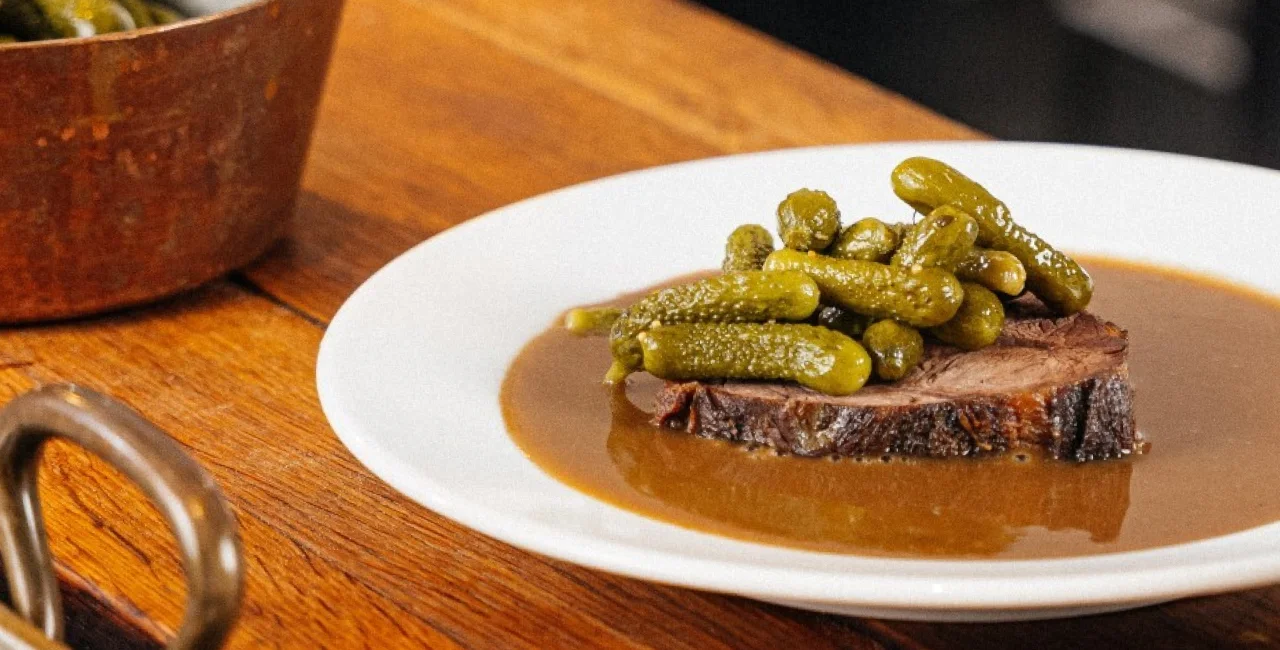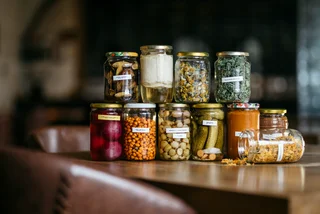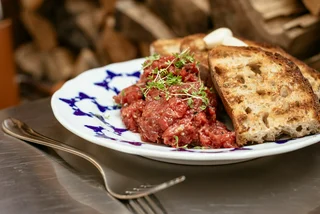The crunchy pickle (nakládaná okurka) represents the enduring Czech tradition of pickling, which has survived centuries unwaveringly. In Czech cuisine, fresh cucumber is used in salads and sides while pickled gherkins and their juice show up in potato salad, tartar sauce, and even in a classic sauce for Czech roast beef.
That recipe, featured here, and shared by Kuchyně restaurant in Prague, uses Znojmo pickles, a classic Czech gherkin with a history dating back to 1572, when a monk managed to sprout cucumber seeds from Hungary. Znojmo pickles are known for their crunchy texture and bumpy surface.
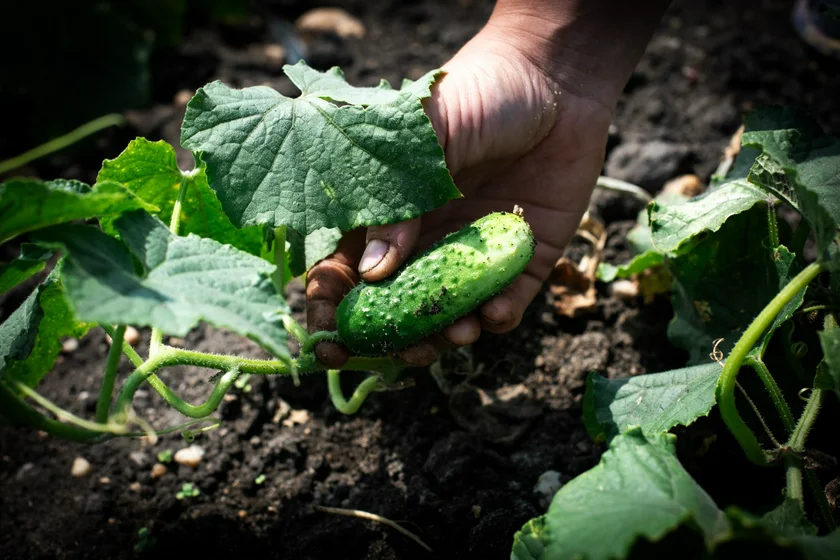
Znojmo roast (Znojemská pečeně) is a surprising and satisfying dish. Kuchyně adds whole pickles fried in butter to the finished dish for a double dose of pickles that give the sauce an extra tart kick and a bigger hit of flavor.
Keep reading to explore what a cucumber needs to thrive in the field, which ones are chosen for pickling, and why the vegetable is an essential part of Czech cuisine a journey that takes us from farmer Hana Součková to the kitchens of Ambiente restaurants.
recipe Znojmo roast from Kuchyně na hradě
Serves 4-5 people:
Ingredients
- 1 kg beef shoulder peeled
- 1 kg onion, finely chopped
- 100 g finely chopped pickled cucumbers for the base
- 150 ml pickle juice
- 4 l beef stock (3 l for the sauce + 1 l for roasting the meat)
- 400 g small pickles for serving
- 4-5 teaspoons of butter (1 teaspoon per serving)
- Salt and pepper, to taste
- Lard, for frying
Method
- 1.Preheat the oven to 180°C. Season the peeled beef shoulder with salt and pepper on all sides. Cook the meat in a roasting tin, continuously basting the meat with the stock and roasting until tender; the quantity of meat given in the recipe will need to bake for 2 to 3 hours.
- 2.In the meantime, make the sauces. Gently sauté the onions in the lard over medium heat until brown and translucent.
- 3.Stir in the pickles, pickle juice, and chives. Season with salt and pepper.
- 4.Next pour in the stock and bring to a boil. Simmer for about an hour.
- 5.Using an immersion blender, blend the finished sauce thoroughly and then strain through a colander.
- 6.To serve, slice the meat and pour the sauce over it.
- 7.Fry the smaller gherkins in butter, and place them on top of the meat slices.
- 8.Serve with steamed rice.
In the beginning was the cucumber
An immigrant plant: Man started growing cucumbers around 5,000 BC, and it probably happened in India. From there, they traveled across Asia to Greece and Rome. The Romans enjoyed cucumbers in dozens of ways (with honey, vinegar, garum, and spices), but the story of fermented pickles allegedly starts with the Slavs, who were the first to ferment the vegetables with whey and later preserve them in vinegar and salt.
Napoleon: It was only in time that the sweet and sour pickle spread more widely, mainly thanks to the discovery of sterilization, and to Parisian delicatessen owner Nicholas Appert. At French Emperor Napoleon I's instigation, Appert tried to devise a way of preserving food in glass and created the forerunner of preserves.
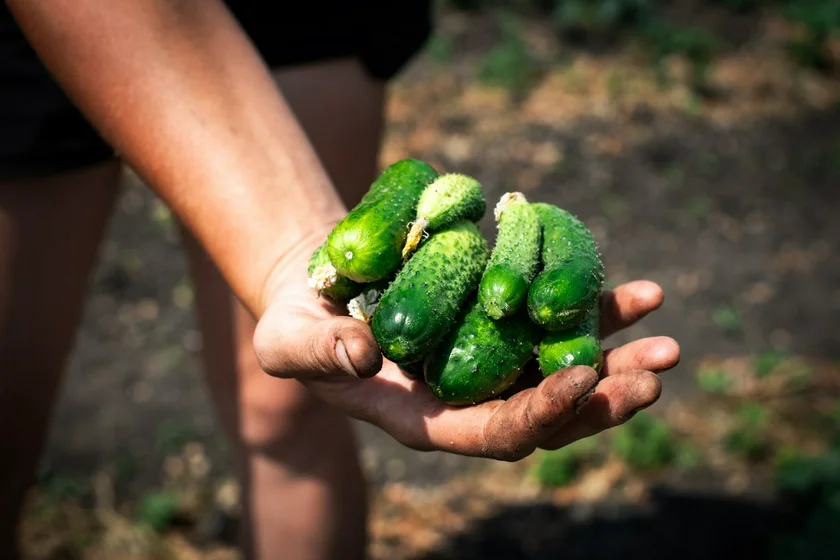
Hybrid: The cucumber growing boom started in the 19th century with the establishment of an oriental variety in Europe. This variety then crossed with the Hungarian cucumber from Znojmo, creating a pickle similar to the one that is still enjoyed today.
Cucumber kings and queens: Approximately 30 varieties of gherkins are registered in the Czech Republic. The Znojemská pickle used to be the most popular, but nowadays it is mainly cultivated by small-scale growers. Large-scale producers focus on new varieties that are bred for high yield. Hanka Součková grows a coarse and resilient variety called Anya in Semice, which requires less watering due to its ability to reach out for water with its roots. Additionally, the pickled cucumber from Žatec, where the cucumber king used to be elected during Masopust (Shrovetide), is well-known in the Czech Republic.
In season: Součková and her family open the pickle season around Halloween; their calendar includes the direct sowing of seeds into the soil at the end of April, with harvest starting at the beginning of the holiday season. The length of the growing season varies based on rainfall and irrigation, temperatures and fertilizer, but each year it ends with the first frost.
The right fertilizer: Cucumbers have a preference for organic manure, whether it is in the form of cow manure, slurry, or a mixture of chicken manure and water. These crawling pickles thrive in conditions characterized by both heat and moisture, while also requiring an abundance of nutrients from nutrient-rich soil. They can effectively demonstrate when they are deficient in certain nutrients.
Cucumbers vs. courgettes: The harvest of cucumbers, like courgettes, is influenced by various factors, including the demand for small fruits for pickling. Similar to courgettes, the more frequently the pickles are harvested, the higher the plant's yield.
Labor intensive: Cucumbers can be quite demanding to grow, especially when following an organic approach that prohibits the use of herbicides. Součková and her family devote their time daily during the growing season to tend to the field. Apart from picking the cucumbers, they also meticulously remove weeds using a hoe. However, as the cucumbers grow larger, hand-pulling becomes necessary. The entire harvesting process, done by hand, results in an average yield of just 6 kilograms of gherkins per hour.
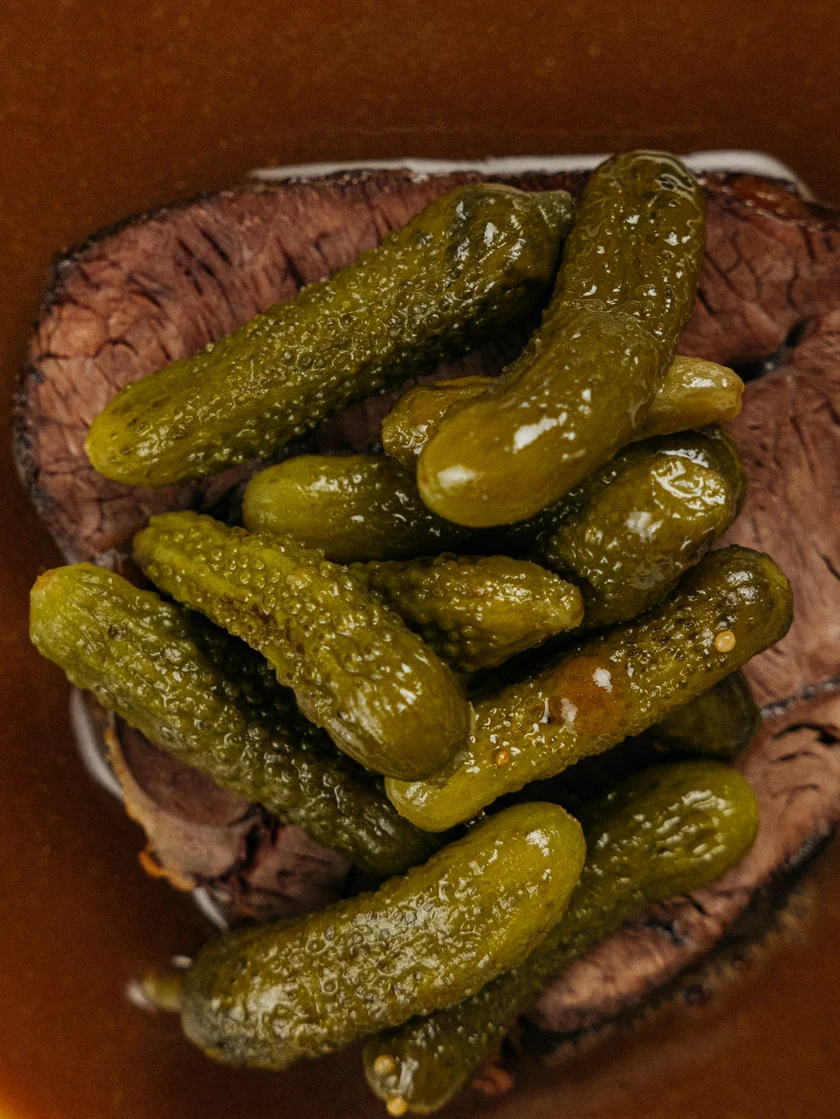
Crisp and crunchy: To maintain the desired crispness of the pickles, it is recommended that farmers harvest and pickle them on the same day. It is important to handle the fruit with care, using clean and dry buckets for harvesting. After sorting the pickles by size, they should be placed in small batches in boxes to prevent crushing and rotting. The filled crates should then be promptly stored in a cool place, as cucumbers have a high water content and can become rubbery if exposed to sunlight.
Remove the stem: When preparing pickles, it is important to remove the stem of the cucumber. The cucumber should be pinched rather than torn, and ideally, the stalk should also be removed. This step is crucial in order to prevent any delays in the pickling process. It is also important to ensure that the fruit itself is not damaged, as any damaged cucumbers should be discarded to prevent bacteria from multiplying and mold from forming during the pickling process. The village of Semice uses a special vegetable washing machine from Japan that saves both water and labor.
CHEF'S TIP: The combination of pickled cucumber on bread with crackling is unique, but it can also be enjoyed with lardo, smoked lard, or bresaola. Finely chopped and added to a vinaigrette or salsa, such as with parsley, oil, salt, cooked egg yolks, vinegar, capers, or anchovies, it is absolutely delicious. Pickled cucumbers can also be grilled as a side dish, for instance with fish, or lightly cooked together with the meat, as in the recipe for Znojemská sauce above.
Small and spiky: When selecting cucumbers for pickling, it is important to choose the small and spiky ones that are between 5 and 8 cm in size. These cucumbers should have a uniform thickness throughout their length, without any bulging. Additionally, they should be covered with bumps, as these contribute to the desired crisp texture. The thicker surface of the cucumbers is also beneficial for the grower, as it indicates good resistance to disease.
Check the market: When looking for pickles, visit the market or a grower's yard to engage all your senses. While cucumbers may not have to look identical, they should not be rubbery. The quality of pickles can be judged by their sweet to buttery taste, crunchiness, and fresh cucumber aroma. Feel free to inquire about the origin and variety, as an honest farmer will gladly provide all the necessary information.
Imported vs. local: Despite the tradition and consumption of cucumbers in the Czech Republic, domestic production of pickles is surprisingly low. The majority of pickles on the market are imported from Turkey or Spain. These imported pickles undergo processing and preservation with quick pickling methods and unnecessary preservatives. We recommend trying locally-produced Czech pickles instead, which are a healthier and more sustainable option.
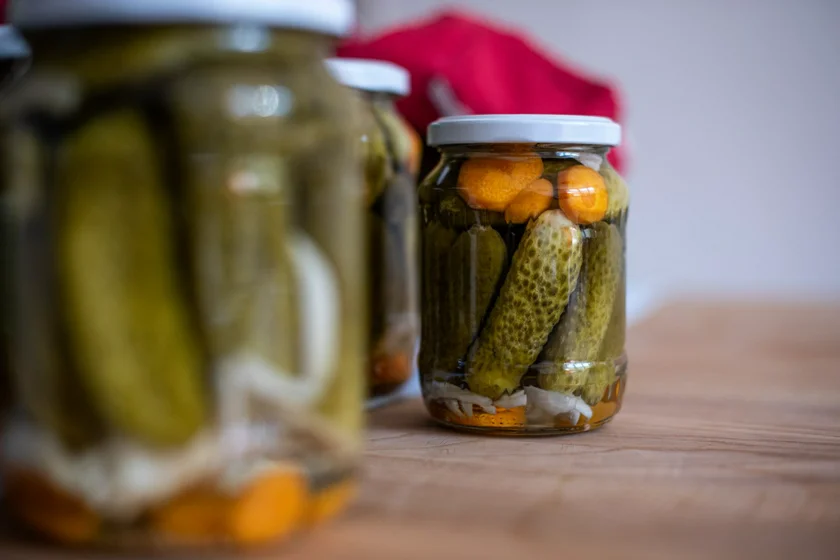
Watermelon and dill: This small cucumber offers incredible culinary potential, whether enjoyed fresh or pickled. When sliced, its flesh emits a melon-like aroma that is truly enticing. You can experience the delightful combination of these two vegetables with feta cheese, olive oil, mint, or dill. The brine, which gives the cucumber its distinctive flavor, is a key ingredient in numerous traditional dishes such as potato salad, Znojmo sauce, tartar sauce, meatloaf with mashed potatoes, and even Czech bread!
Pickles and fat: Pickles were previously known to regulate digestion, soothe the stomach, and pair sensibly with fatty (fried) foods; contemporary chefs praise them for their acidity, spiciness, and contrast of flavors on the plate. Pickled cucumbers are sliced into burgers, melted sandwiches (with lots of cheese and Prague ham), and brioche with fried chicken, sliced into tartare and salads, creamy soups (for flavor and texture), or barley.
Perostky: This is the name given to cucumbers that have remained in the field a little longer and have grown to a size of around 15 cm. The fruits contain harder seeds and are processed either into pickles or salads.
Our cucumbers: This is the name of the pickled cucumbers that Efko preserves according to a recipe from the Ambiente chefs, and the pickles were the first of a series gradually replacing inferior semi-finished products in restaurant kitchens. What's next? The Prostor UM center at Národní 28 recently developed a recipe for ketchup.
Nerve soothing: Cucumbers have gained popularity in Europe since the 16th century. Initially renowned for their supposed ability to cure the plague, they have remained highly regarded in China for thousands of years due to their benefits for the nervous system and immunity. Thanks to their plethora of vitamins and minerals, cucumbers are a great ingredient for a refreshing salad.
Winter delight: Our ancestors would prepare cucumber salad by peeling and thinly slicing young cucumbers. They would salt the cucumbers and let them sit covered for half a day to drain the excess juices. The drained cucumbers were then placed in a jar, leaving enough room for the addition of vinegar. To preserve the salad, the cucumbers were covered with hot melted butter or lard, which solidified and created a barrier against the air. The resulting cucumber salad was stored in a cool cellar for an extended period and seasoned with vinegar and light oil right before serving.
In the Czech Kitchen is a weekly column written in cooperation with the culinary experts from Ambiente. Established in 1995, the Prague-based collective of pubs, restaurants, and fine-dining outlets has transformed the Czech culinary landscape and lent to the widespread awareness of quality food service and production in Czechia. Follow their socials or book your table at www.ambi.cz.












 Reading time: 8 minutes
Reading time: 8 minutes 